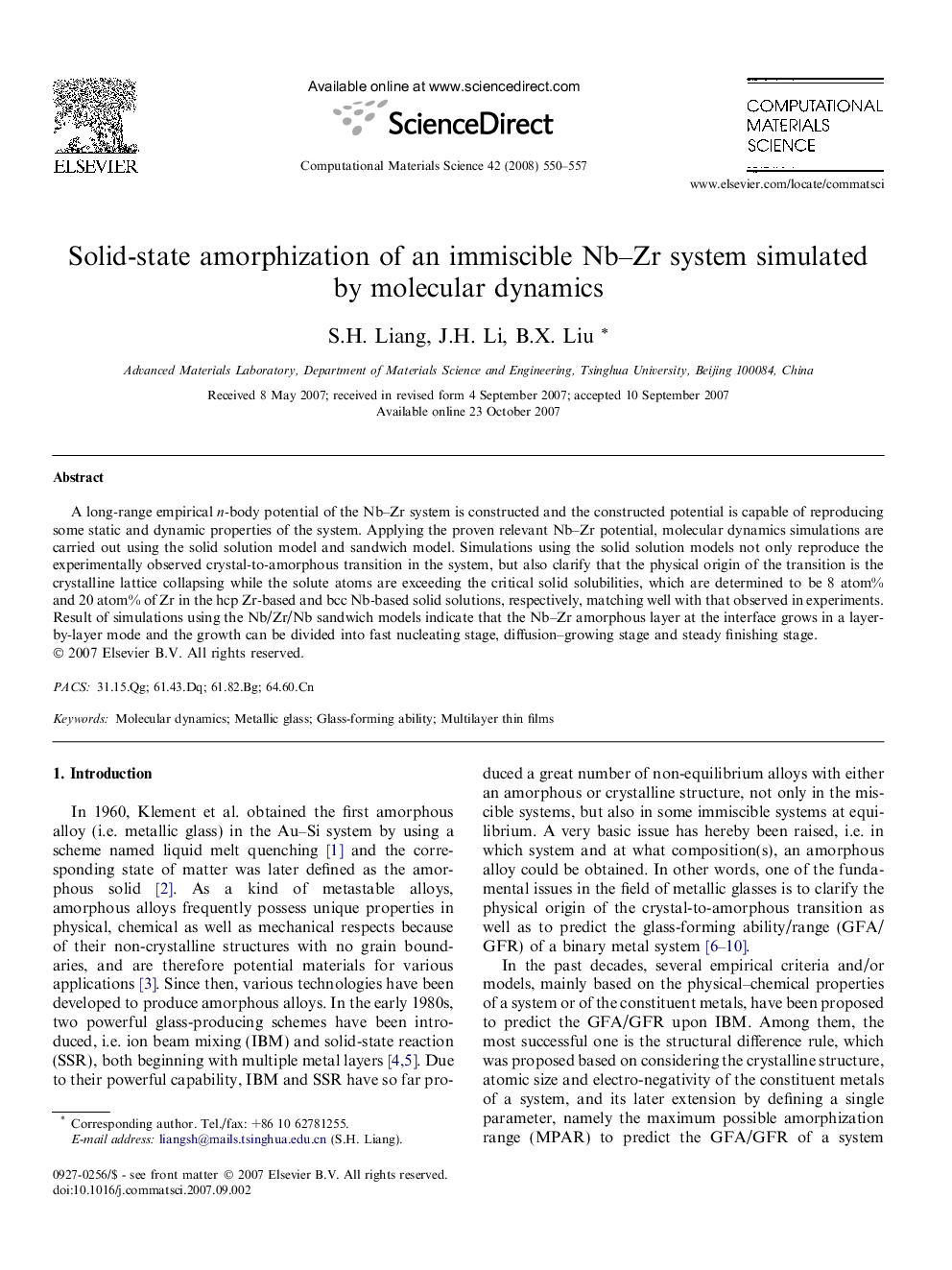| Article ID | Journal | Published Year | Pages | File Type |
|---|---|---|---|---|
| 1563953 | Computational Materials Science | 2008 | 8 Pages |
A long-range empirical n-body potential of the Nb–Zr system is constructed and the constructed potential is capable of reproducing some static and dynamic properties of the system. Applying the proven relevant Nb–Zr potential, molecular dynamics simulations are carried out using the solid solution model and sandwich model. Simulations using the solid solution models not only reproduce the experimentally observed crystal-to-amorphous transition in the system, but also clarify that the physical origin of the transition is the crystalline lattice collapsing while the solute atoms are exceeding the critical solid solubilities, which are determined to be 8 atom% and 20 atom% of Zr in the hcp Zr-based and bcc Nb-based solid solutions, respectively, matching well with that observed in experiments. Result of simulations using the Nb/Zr/Nb sandwich models indicate that the Nb–Zr amorphous layer at the interface grows in a layer-by-layer mode and the growth can be divided into fast nucleating stage, diffusion–growing stage and steady finishing stage.
